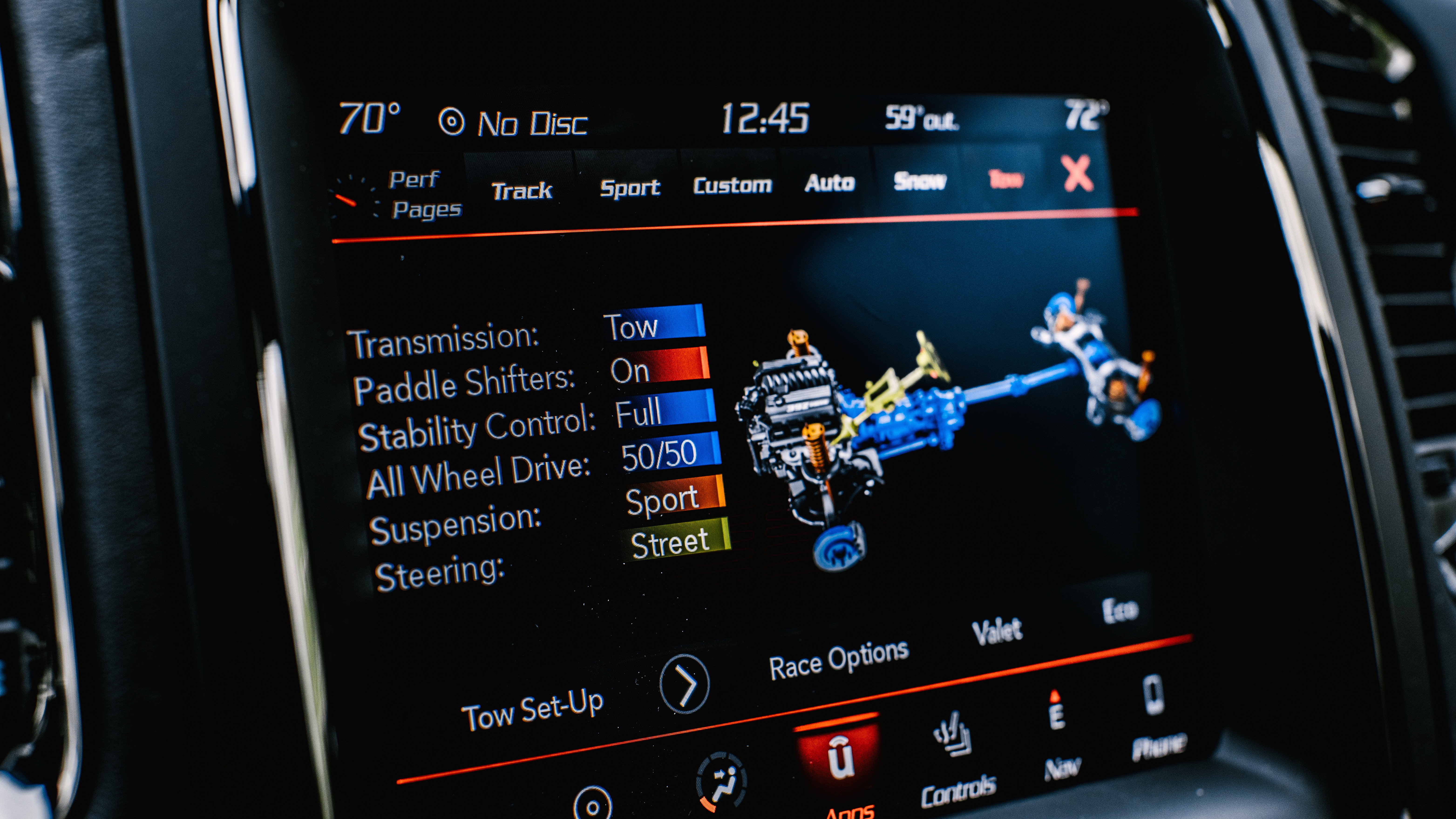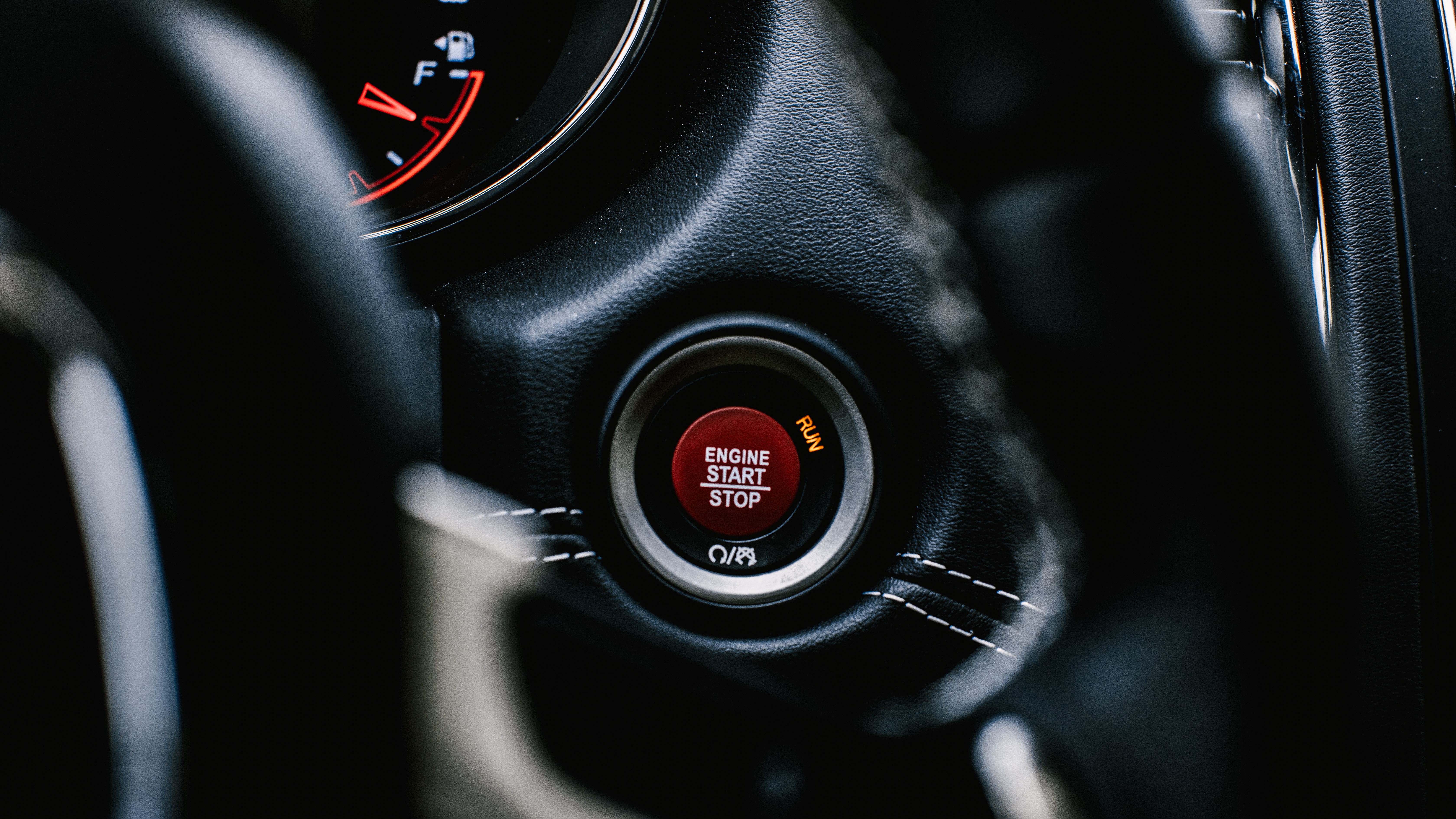Seven touchscreen drive modes in the 2018 Dodge Durango? Sign us up
Will we soon be turning on our cars from a touchscreen?

Photo credit: Josiah Bondy
Versatility is one of the keys to success.
With cars, if you can merge into traffic faster than anyone else, yet tow a camper on the weekend, you know there’s an advantage.
In a recent test of the 2018 Dodge Durango SRT, a unique approach to drive modes – located on the touchscreen instead of the more common switch between the seats – hinted at a future when almost every feature in cars will be on a screen.

You can debate if that’s a good thing. On the Durango, it was easy to find all of the modes, including one for towing, snow, and track modes.
We tested out the sport mode on a backroad and punched the accelerator from a stop sign and, yes, you feel the 475 horsepower engine with 470 lb-ft of torque.
Maybe you don’t need track-ready power if your plan involves shopping at the mall or driving to Chicago, but when there are conditions that warrant a quick pop in speed, the Durango is handy. (It’s rated the fasted three-row SUV on the market).
Sign up for breaking news, reviews, opinion, top tech deals, and more.

With the eco mode, we noticed how the Durango would start disabling cylinders, using only four at highways speeds to save fuel.
When you tap the gas, the V8 engine kicks in again. In some ways, it’s a little weird to see the display switch so often, and Dodge has been doing this in performance vehicles for some time (namely, in the Dodge Challenger line).
We didn’t test tow mode, but Dodge says the vehicle can tow up to 8,700-pounds (which they say is best in class).
The versatility of taking the car out on a track one moment, then towing a boat home, is unusual since many performance cars and crossovers don’t have quite the same options – a vehicle like the 2018 Audi SQ5 is definitely sporty, but lacks the towing power.
Need for screen, or just a passing obsession?
So, how does this all hint at the future of driving? The Durango SRT is the first vehicle we’ve tested that has seven different settings for drive modes, a surprise in how many you can use, but also the fact that you can punch them in from the touchscreen.
Other vehicles from companies like Volvo and Infiniti offer snow modes and eco modes, but it’s a switch below the console.
Cars will offer touchscreen features that work more like an iPad. The Tesla Model S already does feel like driving an Apple tablet, and just about every feature that matters is available with a swipe.
Yet, in future cars, we’ll probably even start the car on a tablet interface in the car, swipe through climate settings, and configure drive modes.

Setting aside how that worked in the Durango – there’s a question about how to make that work for every driver.
Some of us prefer tactile feedback, the soft “click” of a button that we know is set in the right position that we can use without looking.
It’s coming, and we can complain about it if we want, but cars will rely more and more on touchscreen interfaces.
This is especially true considering new models like the 2018 Volvo XC40 don’t even require a key. Using an app, you can grant access to another driver who can unlock and drive without a key.
Eventually, we’ll swipe through lock and unlock settings, start the car, grant access to another driver, configure media playback, and every other option from one single screen.
I’m hoping that provides extra functionality – like the keyless driving in a Volvo – but I’m also wondering if drivers like to have a few knobs and switches in the cab to help them drive.
Take a closer look at the 2018 Dodge Durango in the gallery below:











On The Road is TechRadar's regular look at the futuristic tech in today's hottest cars. John Brandon, a journalist who's been writing about cars for 12 years, puts a new car and its cutting-edge tech through the paces every week. One goal: To find out which new technologies will lead us to fully driverless cars.

John Brandon has covered gadgets and cars for the past 12 years having published over 12,000 articles and tested nearly 8,000 products. He's nothing if not prolific. Before starting his writing career, he led an Information Design practice at a large consumer electronics retailer in the US. His hobbies include deep sea exploration, complaining about the weather, and engineering a vast multiverse conspiracy.